japanese wedding
What is a Japanese Wedding Like? A Look Into Shinto Rituals

Tokyo Terry
Posted on December 26, 2024
Share:

A Japanese wedding is a beautiful example of how the country combines ancient rituals with modern influences. A traditional ceremony often revolves around Shinto practices, symbolizing purity, harmony, and good fortune. But, over time, couples in this country have also embraced Western weddings.
By doing this, they have created a unique fusion of customs. These ceremonies celebrate the bond between the bride, groom, and their family members. They also honor unity and respect. Exploring this Japanese tradition reveals its intricate symbolism and interesting cultural significance. Today, we’ll examine this marriage ceremony more closely and learn its significance.
What is Shinto?
Shinto means “way of the gods.” It is the indigenous religion of the nation and centers on reverence for divine spirits (kami). These spirits are believed to inhabit natural elements like mountains, rivers, and trees. Shinto emphasizes purity and a harmonious connection to nature. Its ceremonies, customs, and festivals revolve around these beliefs. The religion’s rituals reflect these values and create a sense of spiritual balance and community across the country.

This Japanese religion celebrates milestones in life, and marriage is one such milestone. Shinto shrines also serve as sacred spaces for worship and celebration at important points in life. For this reason, weddings are conducted in these shrines so that the couple can seek blessings and follow ancient customs. This is the spiritual foundation of this special ceremony.
What is the process of a Japanese Shinto wedding?
Shinzen Kekkon
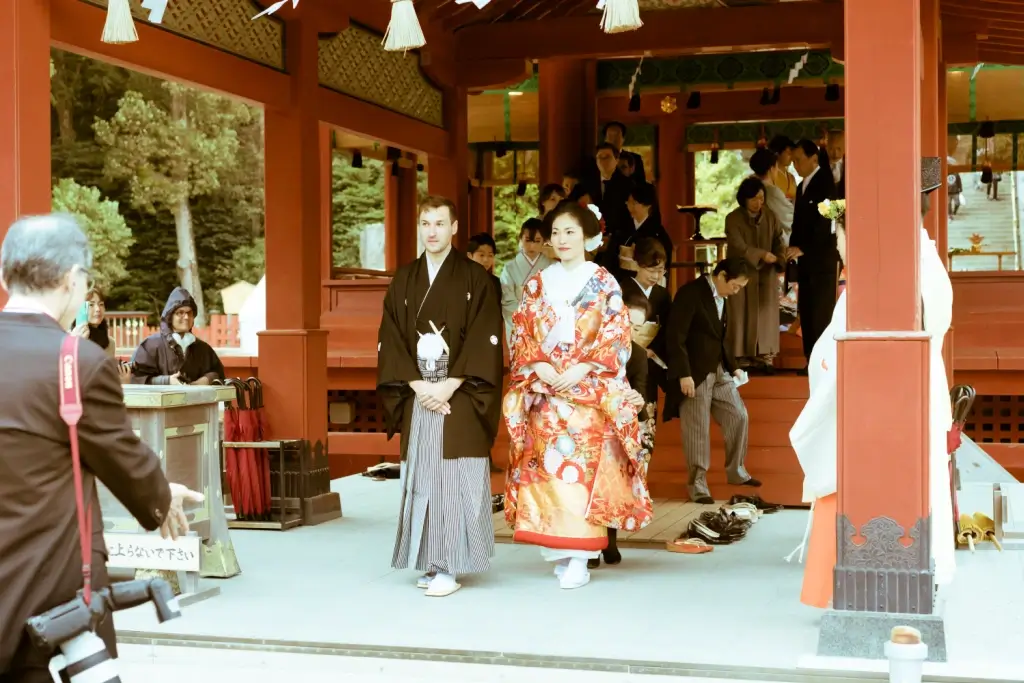
In Japanese, these ceremonies are known as shinzen kekkon, translated as “marriage before the kami.” But it refers to a specific ritual that is the cornerstone of this traditional event. Food is placed on the ceremonial altar with rings during this ritual. A priest supported by a miko (an official shrine priestess) then asks the gods for blessings for the bride and groom. This intimate ceremony typically only involves close family and a few guests. So the atmosphere is calm and intimate. Next, the san san ku do portion of the ceremony begins.
San San Ku Do
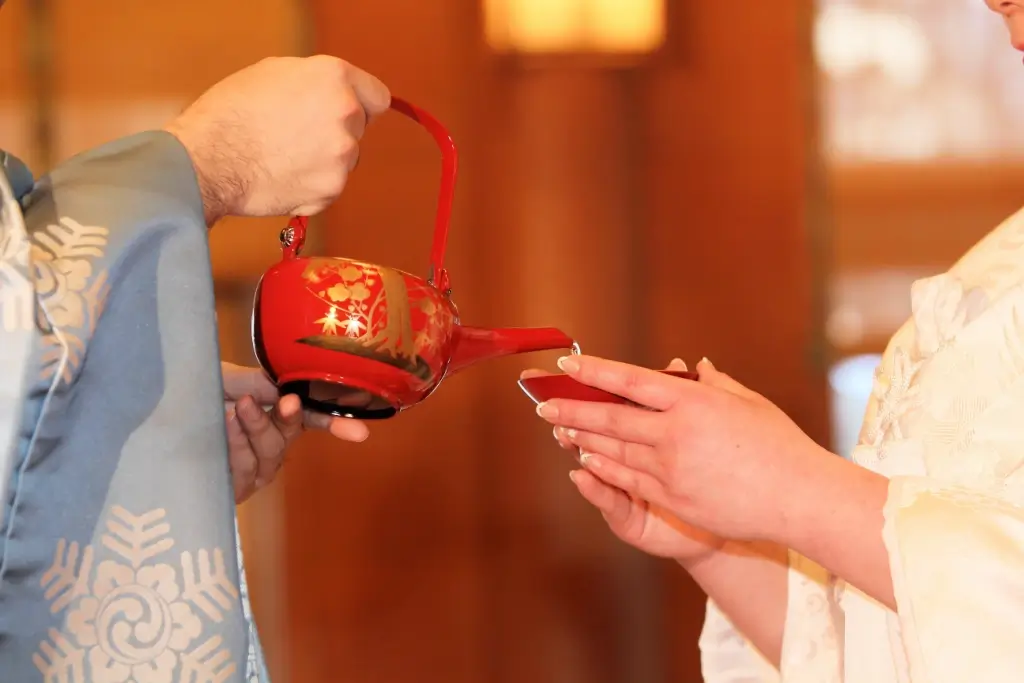
San san ku do is one of the most significant parts of this event. The name can be translated as the “three-three-nine ritual.” The number nine signifies good fortune and harmony in Japanese culture. The numbers represent three promises said three times, three cups of sake filled three times, and consumed in three sips. The bride and groom take three sips from three nuptial cups in this ritual. This act symbolizes the couple’s bond, mutual respect, and the joining of two family members. All three are key themes throughout the event.
Vow Exchange
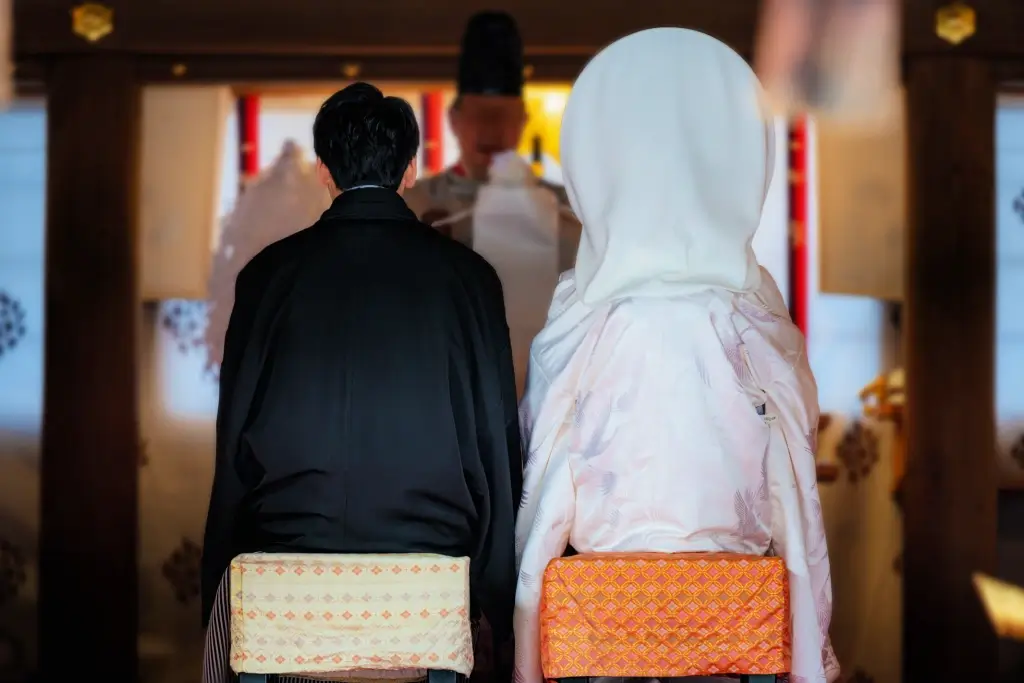
After “san san kudo”, the couple exchanges vows before the gods. These vows confirm their commitment to each other and their family members. The priest, couple, and a family member present offerings at the altar before the rings are presented. This exchange of rings is a practice that was adopted from foreign marriage ceremonies. The nakodo (matchmaker) is then thanked for introducing the couple, and the family joins in for a celebratory sake toast. The ritual concludes with prayers for happiness and prosperity.
Are you looking for fantastic snacks this year? Check out Sakuraco! Sakuraco delivers traditional Japanese snacks, teas, and sweets from local Japanese makers directly to your door so you can enjoy the latest treats directly from Japan!
What does the couple wear during the ceremony?
Grooms wear a black kimono called a montsuki with traditional pleated trousers (hakama). This formal attire shows dignity and respect for the ceremony. The bride is much more elaborately dressed in many kimono layers.

Typically, she wears a very formal white kimono called shiromuku. Pure white represents purity and a new beginning in Japanese culture. Some brides wear a different, more colorful outer kimono style known as a uchikake instead.
Both were inspired by the clothing worn by women of the samurai class before the Meiji era (1868-1912). They also wear a headpiece (tsunokakushi or wataboshi) that signifies modesty. This attire reflects the solemnity and grace of the occasion. Together, their clothing honors the traditions and beliefs of Shinto.
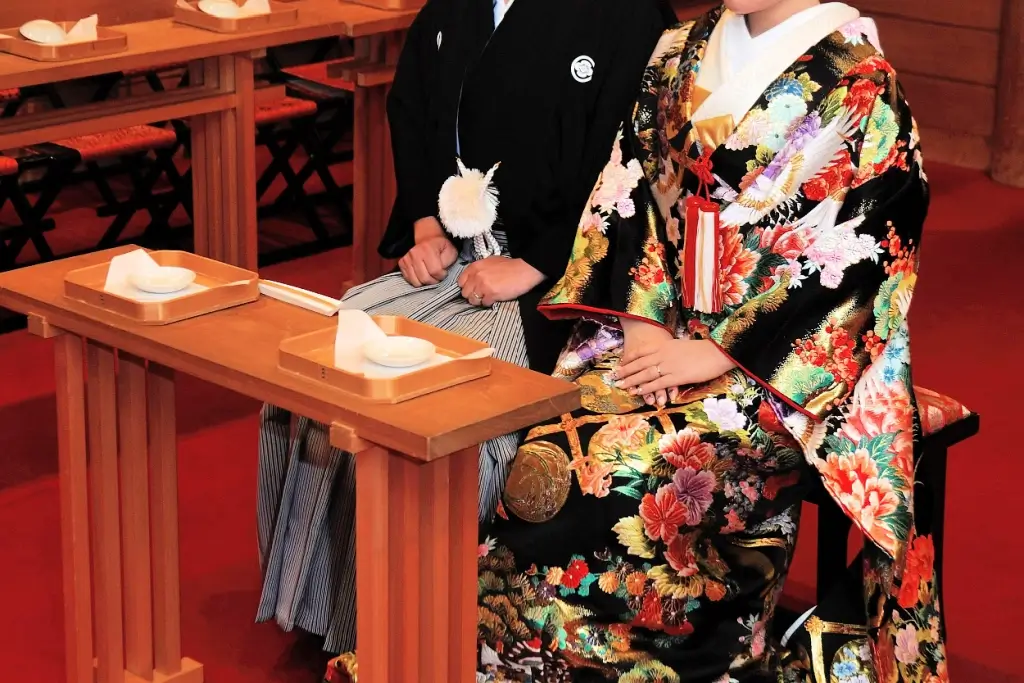
How long have Shinto weddings been popular?
Although Shinto has ancient roots, its weddings only gained popularity during the late 19th century. This occurred during the Meiji era when Prince Yoshihito married Princess Kujo Sadako, and this ceremony was held for the first time. This imperial usage made it the cultural standard for the country. Since that time, foreign influences have slowly mixed with Japanese wedding practices. However, the old customs still make up most of the ceremony to honor tradition.
What’s the difference between a Shinto wedding and a Western wedding?
Shinto weddings emphasize unity, spirituality, and tradition. They are conducted in Shinto shrines, and the rites are deeply symbolic. They focus on gods, family members, ancient rites, and harmony. Guests are expected to pay respects by presenting gifts in a special goshugi envelope.
In contrast, Japanese couples often choose Western-style weddings because of their global popularity and festive atmosphere. The bride and groom wear Western-style clothes, and the ceremony is much more elaborate.
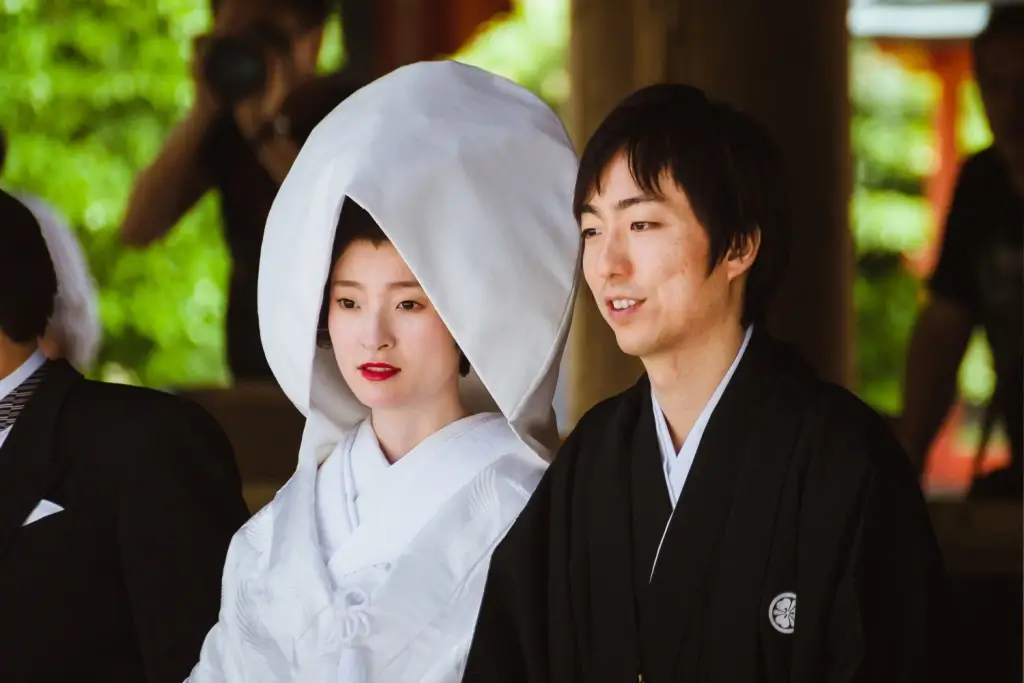
Why are Japanese weddings unique?
Japanese weddings are unique because of their specific style, purpose, and rituals. However, they do not necessarily strictly follow any specific format. They can be strictly Shinto, primarily Western, or blend the two styles to varying degrees. However, they always incorporate traditional Japanese beliefs while showing flexibility and innovation. Did you get married in Japan, or have you attended a Japanese wedding? What style was it? What did you find interesting? Share your thoughts in the comments below!

Discover authentic flavors with Sakuraco
Get Sakuraco 

Discover authentic flavors with Sakuraco
Get Sakuraco 
Related Articles
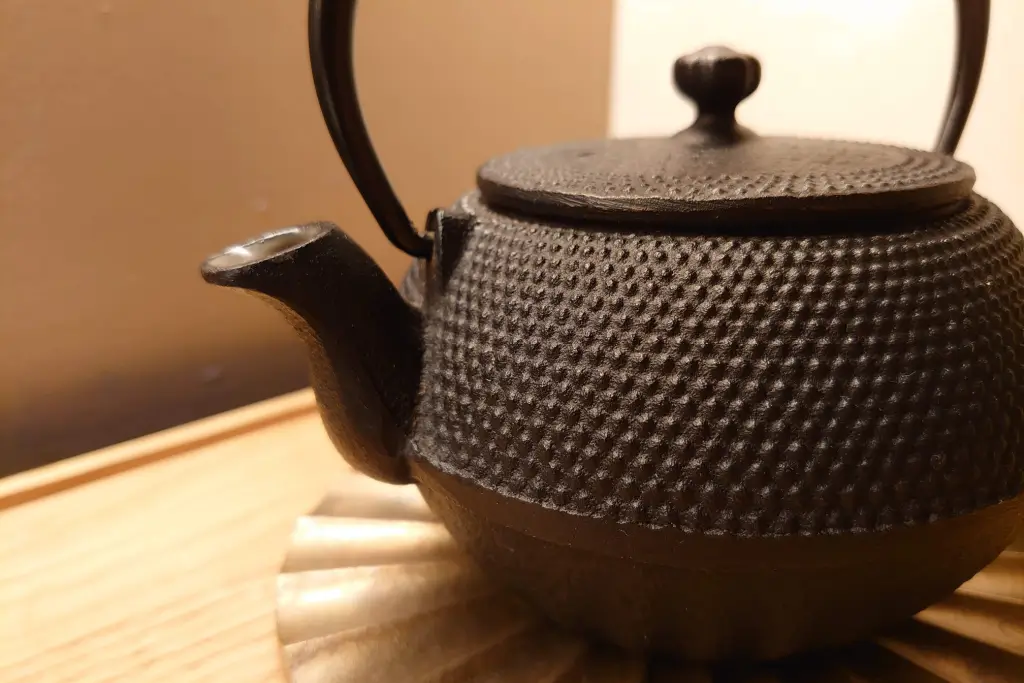
Nambu Tekki: Morioka’s Amazing Iron Craft
In the historic city of Morioka, Iwate Prefecture, a craft with over 400 years of history continues to captivate with its rustic beauty and practical charm. Nambu tekki, or Nambu cast iron, refers to traditional ironware, such as teapots, kettles, and decorative pieces, that embody the spirit of Tohoku craftsmanship.

Ebisu: The Cheerful Guardian of Luck and Prosperity
Religion in Japan involves a dizzying array of spirits and beings. These gods are inspired by ancient tales and used to symbolize nature’s bounty. However, they also profoundly impact daily life and are often sought out for help in challenging times

Little New Year in Japan: Discovering Koshogatsu Traditions
When people think of the Japanese New Year, they typically associate it with January 1st. It’s a time for celebrations, family, special foods, and visits to shrines for hatsumode (first prayer of the year).

Hatsumode: Why Is It Japan’s Most Important Tradition?
Hatsumode is the first visit to a shrine or temple in the New Year in Japan, and it is one of the country’s most important traditions. Every year, millions of people participate, demonstrating the profound connection between this custom and daily life.



